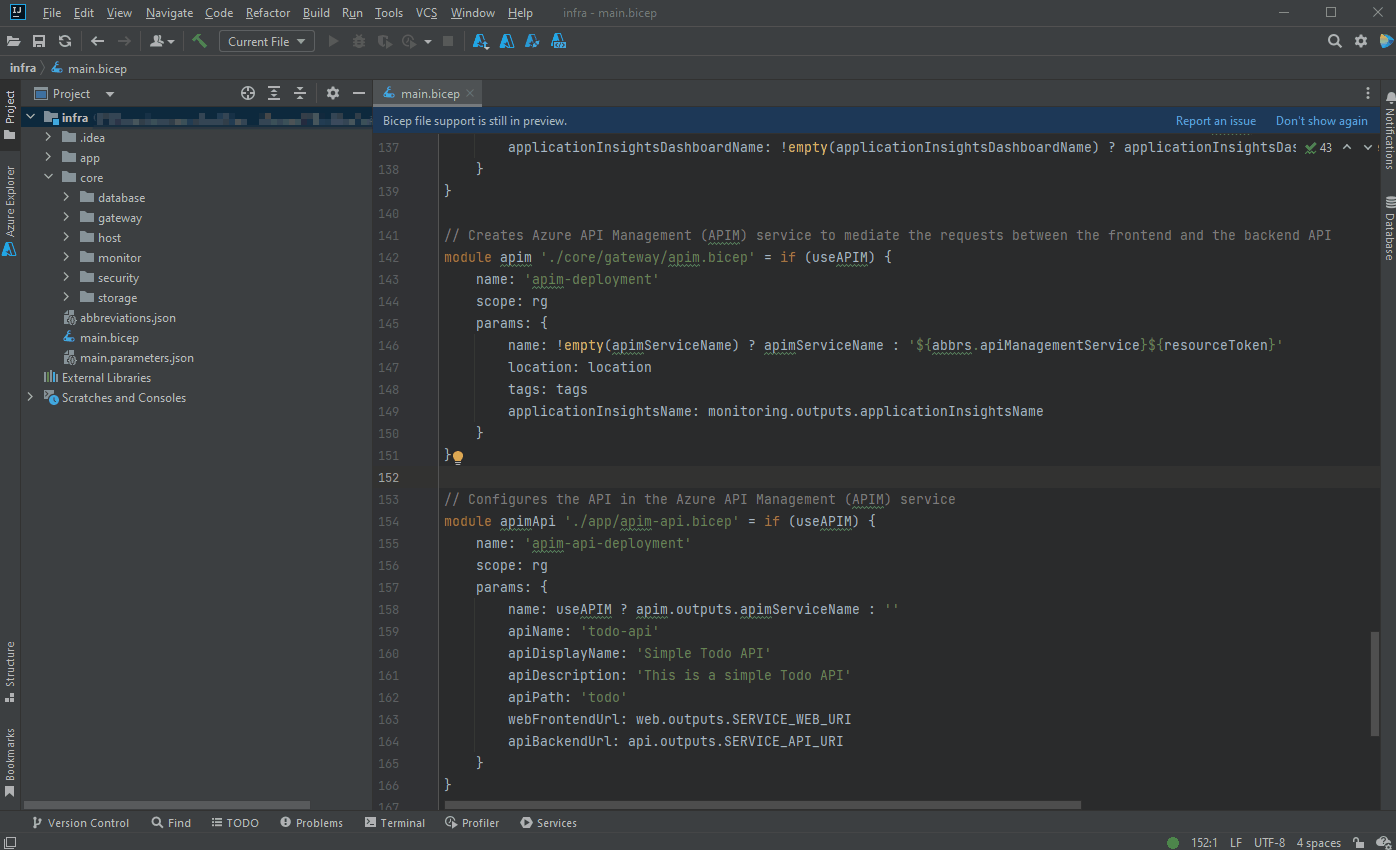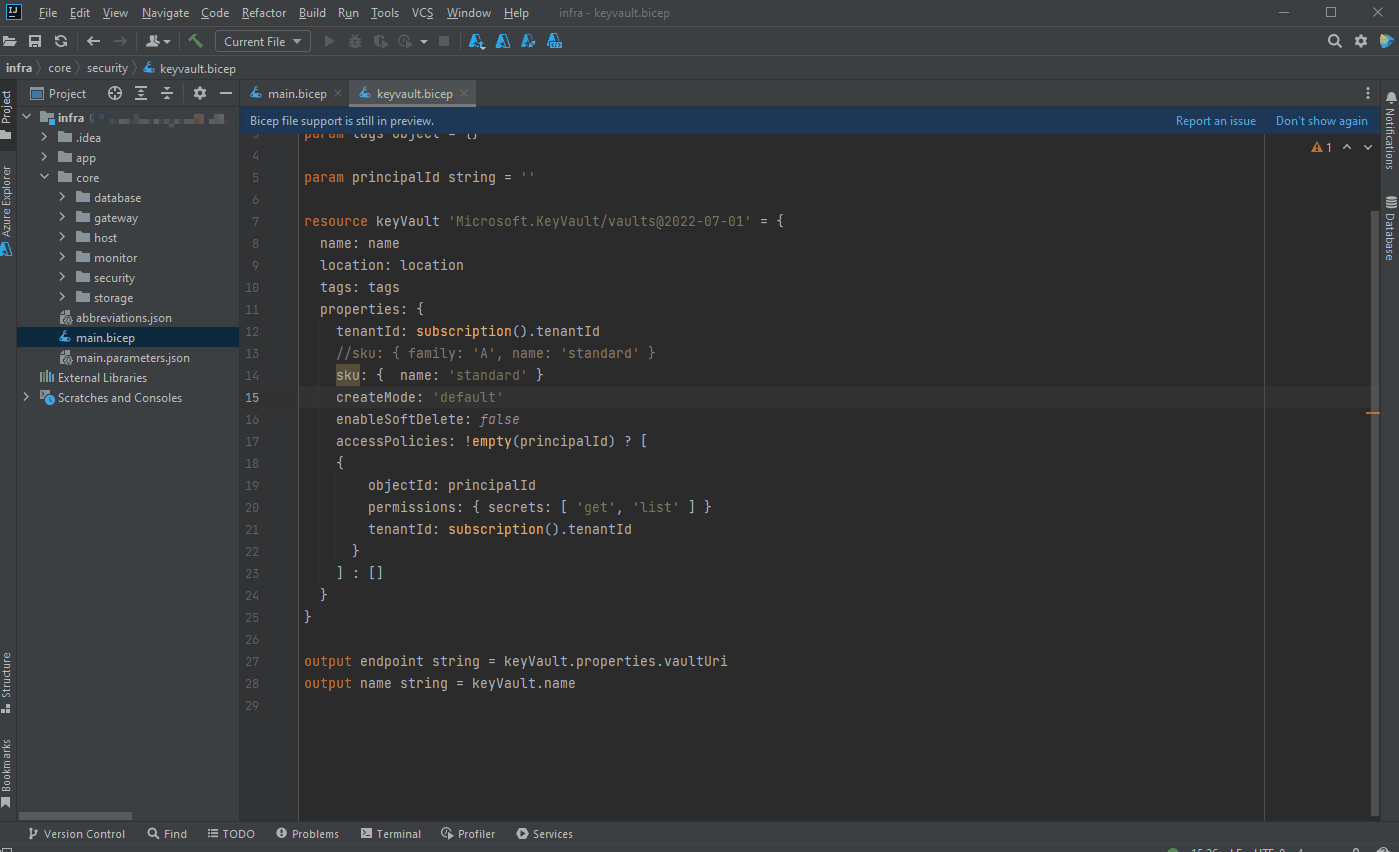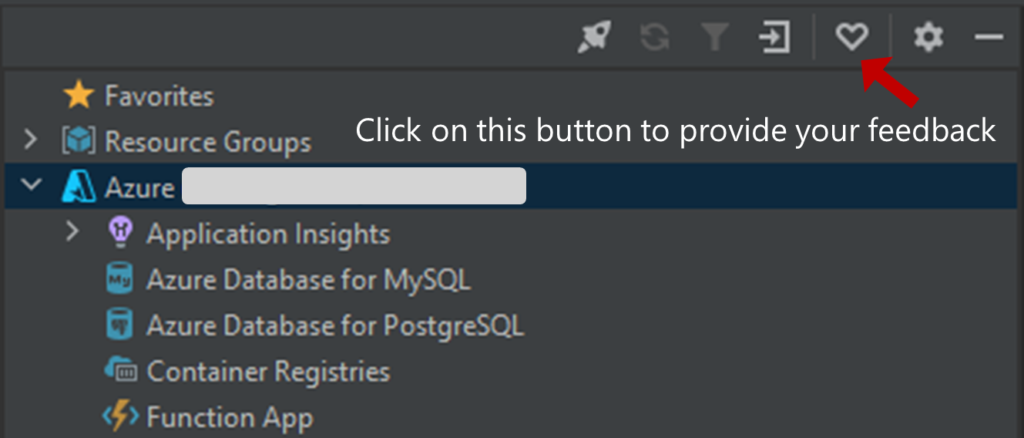Hi everyone, welcome to our first blog of the year for Java on Azure tooling. In this update, we will introduce the support for Azure Container Apps and new features for Bicep language support (in preview) in IntelliJ IDEA. Please download and install the Azure Toolkit for IntelliJ. We hope you like these features and enjoy the experience with our Azure toolkit. So let us get started.
Azure Toolkit for IntelliJ Improvements
Resource Management of Azure Container Apps
There are many options for developers to build and deploy cloud-native and containerized applications on Azure. Among them, Azure Container Apps enables you to build serverless microservices based on containers with distinctive features. With Azure Container Apps, you can focus on running the containers rather than managing your container’s cloud infrastructure or complicated orchestrators. Basically, you could run containers with minimal configuration and management overhead. For more details, please see this document with guidance.
We have heard from users that they want the support of Azure Container Apps in our toolkit. In the latest release, here’s how you can select your image file from the image source,
- Select from Azure Container Registries
- Select from Docker Hub Registry
- Select from other public Registry
To deploy it to Azure Container Apps with our toolkit, right-click on the instance in Azure Explorer with the option “Update Image” to finish the following steps. Here is also a short demo of it.
Bicep language support (in preview)
Bicep is a domain-specific language (DSL) that uses declarative syntax to deploy Azure resources. In a Bicep file, you define the infrastructure you want to deploy to Azure, and then use that file throughout the development lifecycle to repeatedly deploy your infrastructure. Please see the documentation.
We have found that developers will extremely benefit from this kind of Bicep language support in IntelliJ IDEA, which could enable them to declare it in a file and deploy it to the cloud instead of creating resources from the GUI with other advantages like automated deployments, simple syntax, and flexibility for all resource types and API versions of Azure. To meet this demand from Java developers on Azure, we have provided Bicep language support (in preview) with the latest release.
Main Features
Code Completion
You can press the CTRL+SPACE keys to see the completion items list, which depends on your cursor position. Code completion items will pop up automatically.
Go to Definition
You can use CTRL+CLICK(COMMAND+CLICK in MacOS) to navigate to its definition.
Diagnostics
To see diagnostics (errors, warnings etc.), you can hover over them to view the message.
Feedback and Suggestions
Please don’t hesitate to try our product! Your feedback and suggestions are very important to us and will help shape our product in the future.
- Leave your comment on this blog post
- Create a feature request or submit a bug on our official GitHub Issues page
- Fill in our survey
Resources
Here is a list of links that are helpful to learn Java on Azure Tooling.
- Azure Toolkit for IntelliJ documentation
- Azure Toolkit for Eclipse documentation
- Maven Plugin for Azure Web Apps/Functions/Spring Apps
- Gradle Plugin for Azure Web Apps/Functions
- VS Code extension for Azure Spring Apps





0 comments